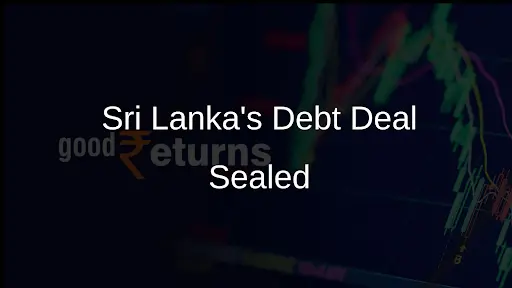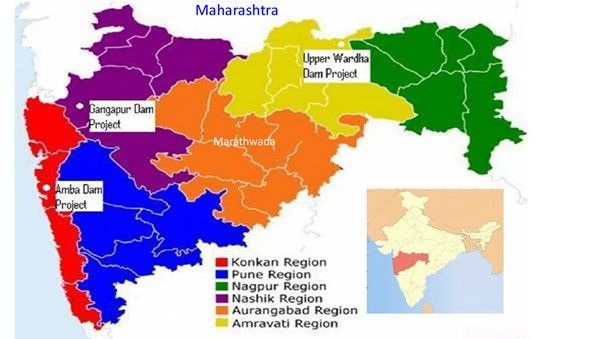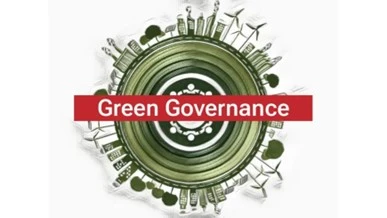Saturday, 29th June 2024
India Inclusion in JP Morgan EM Bond Index
Why in the News?
- Recently, India has officially been included in JP Morgan's Government Bond Index-Emerging Markets (GBI-EM).
- This inclusion is expected to bring nearly $20-25 billion into the country over the next 10 months, aiding India in managing its external finances, bolstering foreign exchange reserves, and strengthening the rupee.
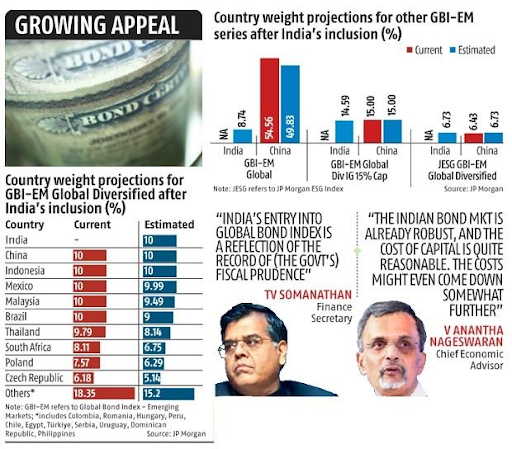
Indian Bond Market:
- Importance of Bond Markets:
- Bond markets are advantageous for corporate entities and government bodies, providing a flexible and efficient capital-raising mechanism.
- They help companies avoid equity dilution.
- The cost of capital is reduced since interest expenses on debt instruments are tax-deductible, making bonds a more attractive financing option than other methods.
- India's Bond Market:
- India’s bond market plays a crucial role in its economic framework.
- As of September 2023, the government bond market size is $1.3 trillion, with corporate bonds at $0.6 trillion.
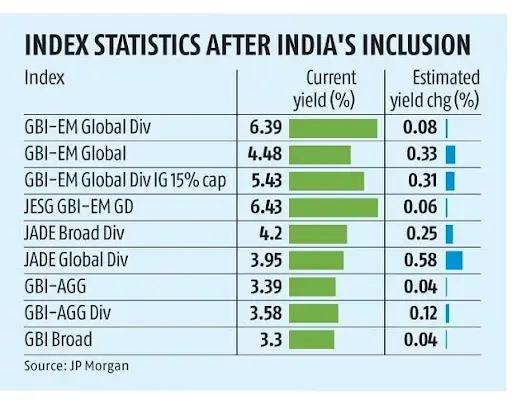
- Challenges in Indian Bond Markets:
- Narrow investment base
- Insufficient participation by foreign investors
- Virtually nonexistent secondary market
- Private placement (sale of stock shares or bonds to pre-selected investors and institutions rather than publicly on the open market)
- Solutions:
- Inclusion in Global Indices
- Presence of market makers on both buy and sell-side
- No credit default swaps
- “Bonds bhi ‘Sahi Hain’” marketing campaign to attract all age groups in society
- Credit enhancement frameworks
- Incentivizing the issuer
What is the JP Morgan Emerging Market Index?
- Created in the early 1990s, it is the most widely referenced index for emerging market bonds and serves as benchmarks for local market and corporate EM bonds.
- It started with the issuance of the first Brady bond, denominated in U.S. dollars, issued by developing countries and backed by U.S. Treasury bonds.
- It expanded to include the GBI-EM (in 2005) and the Corporate Emerging Markets Bond Index (CEMBI).
What was JP Morgan’s Announcement?
- JP Morgan announced the inclusion of Indian Government Bonds (IGBs) in its emerging markets bond index starting June 28, 2024.
- 23 IGBs meet the index eligibility criteria, with a combined notional value of approximately Rs 27 lakh crore or $330 billion.
- Only IGBs under the Fully Accessible Route (FAR), introduced by the RBI in 2020 to enable non-residents to invest in specified Government of India dated securities, are eligible for the index.
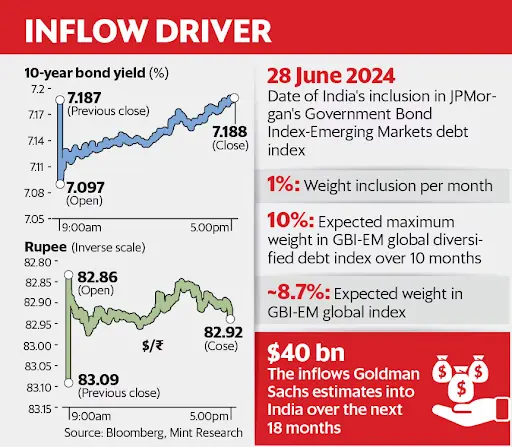
Impact of IGBs Inclusion:
- India is expected to reach the maximum weight of 10% in the GBI-EM Global Diversified Index (GBI-EM GD).
- Higher weightage will prompt global investors to allocate more funds (~$2-3 billion flows to India every month) for investment in Indian debt.
- This will reduce risk premia, help finance India’s fiscal and current account deficit (CAD), enhance the liquidity and ownership base of government securities (G-secs), and support the diversification of the investor base for Indian government securities.
- It could help lower funding costs slightly and further develop domestic capital markets.
Will Higher Inflows be a Concern for RBI?
- When the Reserve Bank of India (RBI) removes dollars from the market, it must release an equal amount in rupees.
- While higher inflows will boost the rupee, the RBI will need to use its tools to manage resultant inflationary pressures.
Source: IE
NEET/NET fiasco: Time for Technology
Why in the news ?
- The recent issues with the NEET and UGC NET exams have revealed significant flaws in India's examination system, with the National Testing Agency (NTA) being heavily criticised.
- The government responded by removing the NTA director and initiating investigations that led to several arrests.
- However, a comprehensive and systematic solution is crucial to prevent future crises and to maintain the integrity and reliability of mass-scale testing.
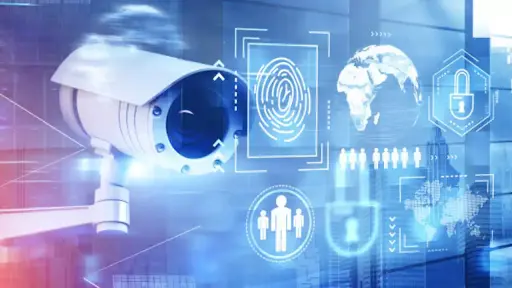
Problems Associated with India’s Examination System:
- The High-Stakes Exam Culture:
- The current system relies on a single high-stakes exam for professional course selection, which has several issues.
- This encourages rote learning over conceptual understanding, leading to the growth of coaching centres.
- These centres focus on exam strategies rather than holistic education, generating substantial profits while putting students under intense pressure and limiting personal growth.
- Mismatched Aptitude and Course Selection:
- This is particularly evident in engineering, where the number of graduates has decreased by 40% over the past five years, indicating a lack of sustained interest post-admission.
- The current selection process does not adequately consider students' genuine interests and aptitudes.
- The Undermined School System:
- The dominance of coaching institutions has severely impacted the school system, especially in higher classes (11th and 12th grades).
- The focus on rote-based learning compromises the holistic personality development envisioned in policies like the National Education Policy (NEP) 2020.
- This shift from comprehensive education to narrow exam preparation harms students' overall development.
- Flaws in Assessment and Evaluation:
- The 10th and 12th Class Board exams are summative assessments that encourage cramming rather than deep learning.
- Although NEP 2020 advocates for formative and competency-based assessments, the 2022-23 deadline for implementing these reforms has passed without significant progress.
The Necessity of Robust Examination Systems:
- Ensuring Fairness and Integrity:
- The primary purpose of any examination system is to ensure fairness and integrity in the assessment process.
- A robust system minimises the chances of malpractice and fraud, ensuring that results reflect the true capabilities and knowledge of the candidates.
- The recent reliance on pen-and-paper exams has exposed vulnerabilities, including paper leaks and impersonation.
- Enhancing Credibility and Trust:
- A reliable examination system is crucial for maintaining the credibility of educational institutions and the government.
- Transparent and secure exam processes build trust among stakeholders, including students, parents, and employers.
- This trust is foundational for the legitimacy of educational credentials and, by extension, the career prospects of students.
- Promoting Holistic Assessment:
- A robust system would integrate multiple forms of assessment, including formative assessments, project-based evaluations, and practical applications.
- This approach provides a more holistic view of a student's capabilities, including critical thinking, problem-solving, and practical skills.
Proposals for Systematic Reforms to Prevent Malpractices and Frauds:
- Adapting to Technological Advancements:
- The education sector must keep pace with rapid technological advancements.
- A robust examination system would leverage technology for conducting, preparing, and evaluating exams.
- Online testing platforms, AI-based proctoring, and automated evaluation can enhance the efficiency and reliability of the examination process.
- AI-based proctoring can detect even minor discrepancies, reducing the likelihood of cheating and ensuring a fair assessment environment.
- Teachers contributing to the question bank and testing items for difficulty levels would create a participative system, aligning with NEP 2020 objectives.
- Standardising Assessment Methods:
- The government should introduce a system where 40% of the admission weightage is based on eight quarterly academic assessments conducted online over two years.
- These assessments, taken within schools, would be proctored using AI-based fraud detection to ensure integrity.
- The question banks should emphasise critical thinking, conceptual understanding, and problem-solving skills.
- Another 40% weightage should be assigned to social and professional aptitude, assessed through two six-week internships related to the chosen field of study and mandatory participation in social upliftment programs like NSS/NCC.
- The remaining 20% weightage should be allocated to the final NEET/JEE exam, conducted online at least twice a year, allowing students to choose their best score for final consideration.
- Supporting Continuous and Comprehensive Evaluation:
- One of the critical flaws in the current system is the reliance on a single, high-stakes exam to determine a student's future.
- A robust examination system would support continuous and comprehensive evaluation, spreading assessments over a period and incorporating various forms of evaluation.
- This approach reduces pressure on students and provides multiple opportunities to demonstrate their abilities, leading to a more accurate and fair assessment of their knowledge and skills.
- Addressing Logistical Challenges:
- Conducting large-scale exams poses significant logistical challenges, from managing exam centres to ensuring the timely distribution and collection of exam papers.
- A robust system that utilises online platforms can streamline these processes, reducing logistical burdens and potential errors and delays.
- Online exams can be administered simultaneously across multiple locations, ensuring uniformity and reducing logistical complexity.
- Revitalising School Education:
- By focusing on continuous assessments and reducing the stakes of a single exam, the proposed system can redirect attention back to schools, fostering a more holistic education environment.
- Reformed assessment systems should prioritise concept-based understanding, fulfilling NEP 2020's mandate and significantly reducing the potential for examination fraud.
- Reducing the Influence of Coaching Centers:
- The current high-stakes exam system has led to the proliferation of coaching centres, which focus on teaching students how to crack exams rather than fostering a deep understanding of the subjects.
- A robust examination system that emphasises continuous and varied assessments would reduce reliance on coaching centres, encouraging a more balanced and holistic educational approach.
- This shift would allow students to focus more on conceptual learning and personal development rather than merely preparing for exams.
- Preparing Students for Future Challenges:
- A robust examination system is not just about assessing students' current knowledge but also about preparing them for future challenges.
- By incorporating assessments that evaluate critical thinking, problem-solving, and practical skills, the system can better prepare students for higher education and professional environments.
- This comprehensive approach ensures that students are not only academically proficient but also equipped with the necessary skills to succeed in their future endeavours.
Conclusion
The ongoing crisis in mass-scale examinations highlights the urgent need for systemic reform in India's education system.Implementing continuous assessments, evaluating social and professional aptitudes, and leveraging technology for secure testing are crucial for ensuring exam integrity and effectiveness. These reforms can transform education, promote genuine learning, and safeguard millions of students' futures.
|
UPSC Civil Services Examination, Previous Year Question (PYQ) Prelims Q:1 Which of the following provisions of the Constitution does India have a bearing on Education? (2012)
Select the correct answer using the codes given below:
Ans: D Mains Q:1 How have digital initiatives in India contributed to the functioning of the education system in the country? Elaborate on your answer. (2020) |
Source: IE
Controversy over Sengol in Lok Sabha
Why in the News?
- An opposition parliamentarian has called for the removal of the Sengol from the Lok Sabha, labelling it a symbol of "rajdand/rajtantra (monarchy)."
- This demand has sparked a contentious debate between the government and the Opposition.
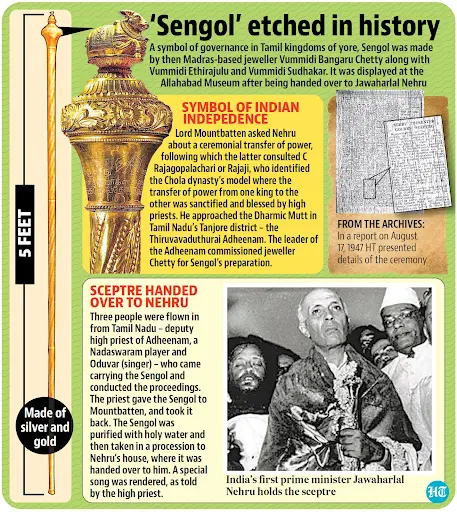
What is a Sengol?
- Definition: A sengol (or chenkol) is a royal sceptre symbolising kingship, righteousness, justice, and authority.
- Historical Origin: It is a traditional symbol from the Chola era in Tamil Nadu.
- Description: The Sengol is a golden sceptre, richly adorned with intricate designs, reflecting the grandeur of ancient Tamil culture.
- Cultural Significance: Among the Madurai Nayakas, the Sengol was placed before the goddess Meenakshi in the temple, then transferred to the throne room, symbolising the king’s role as a divine agent.
Significance in the Present Context:
- Accountability and Legitimacy: Like the Sengol legitimised ancient rulers, democratic institutions hold elected representatives accountable to the constitution and the people.
- Ethical Leadership: Democratic leaders are expected to uphold justice, integrity, and the rule of law, mirroring the dharmic kings of the past.
- Symbolic Representation: The Sengol’s symbolism of righteous rule parallels the democratic institutions representing the will and welfare of the people.
1947 Sengol Ceremony Involving Nehru:
- Government’s Claim: The government asserts that C Rajagopalachari suggested the ceremony to Nehru.
- Debates on Historical Accuracy: This claim is contested, with little contemporary evidence supporting the Sengol as a key symbol of power transfer in 1947.
- Lack of Comprehensive Records: Limited records exist about the ceremony where Nehru was reportedly handed a Sengol by Hindu leaders from Tamil Nadu.
- Undocumented and Exaggerated Claims: The event is not widely documented, and claims of Lord Mountbatten ceremonially handing it over seem exaggerated.
- Post-Event Placement: Nehru accepted the Sengol as a mark of honour, but it was later placed in a museum, suggesting it was not central to the power transfer.
Source: TH
RBI releases the Financial Stability Report, 2024
Why in the news ?
- Recently, the RBI published the 29th issue of the Financial Stability Report (FSR) .
- This report provides the combined evaluation of the Sub-Committee of the Financial Stability and Development Council (FSDC) regarding the Indian financial system’s resilience and the risks to financial stability.
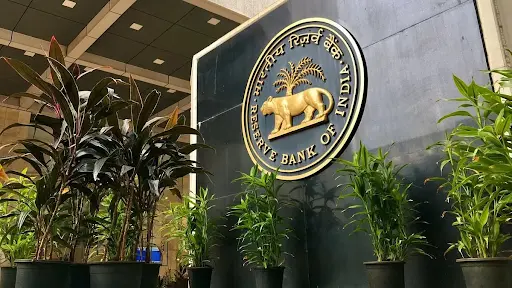
|
About the Financial Stability Report (FSR):
|
Key Highlights of the Financial Stability Report (FSR):
[1] Global Economic Context:
- Heightened Global Risks: The global economy is facing significant challenges such as:
- Geopolitical Tensions: Conflicts or political disagreements between countries that can affect global stability.
- Elevated Public Debt: Many countries have high levels of debt, which can be risky if they struggle to repay it.
- Slow Progress in Disinflation: Prices of goods and services are not decreasing quickly, affecting economic stability.
- Resilience: Despite these challenges, the global financial system remains strong and stable.
[2] Indian Economy and Financial System:
- Robust and Resilient: India’s economy and financial system are strong and capable of handling shocks or problems.
- Banking Sector Support: Banks and financial institutions are in good health and are providing the necessary support for economic activities.
[3] Financial Metrics for Scheduled Commercial Banks (SCBs):
- Capital Ratios:
- Capital to Risk-Weighted Assets Ratio (CRAR): Measures a bank’s financial strength. A CRAR of 16.8% indicates that for every 100 units of risk, the bank has 16.8 units of capital to cover potential losses.
- Common Equity Tier 1 (CET1) Ratio: A stricter measure of a bank’s core capital. A CET1 ratio of 13.9% shows a strong base of high-quality capital.
- Asset Quality:
- Gross Non-Performing Assets (GNPA) Ratio: Measures the percentage of a bank’s loans that are not being repaid. A GNPA ratio of 2.8% means that 2.8% of total loans are in trouble.
- Net Non-Performing Assets (NNPA) Ratio: Similar to GNPA but considers provisions already made. An NNPA ratio of 0.6% means that 0.6% of total loans, after accounting for provisions, are in trouble.
[4] Macro Stress Tests for Credit Risk:
- Stress Scenarios and Projections:
- Baseline Scenario: Banks are expected to have a CRAR of 16.1% by March 2025 under normal conditions.
- Medium Stress Scenario: Banks are expected to have a CRAR of 14.4% by March 2025 under moderate stress.
- Severe Stress Scenario: Banks are expected to have a CRAR of 13.0% by March 2025 under severe stress.
- Interpretation: These tests show how banks might perform under different levels of economic stress, ensuring banks are prepared for tough times.
[5] Health of Non-Banking Financial Companies (NBFCs):
- CRAR: NBFCs have a CRAR of 26.6%, indicating strong financial health.
- GNPA Ratio: NBFCs have a GNPA ratio of 4.0%, meaning 4% of their loans are not being repaid.
- Return on Assets (RoA): NBFCs have a RoA of 3.3%, indicating good profitability from their assets
|
UPSC Civil Services Examination, Previous Year Question (PYQ) Prelims Q:1 With reference to ‘Financial Stability and Development Council’, consider the following statements:(2016)
Which of the statements given above is/are correct?
Answer: C |
Source: TH
UNODC World Drug Report 2024
Why in the News?
- Recently, Global drug users reached 292 million in 2022, marking a 20% increase over the past decade. This data was released by the United Nations Office on Drugs and Crime (UNODC).
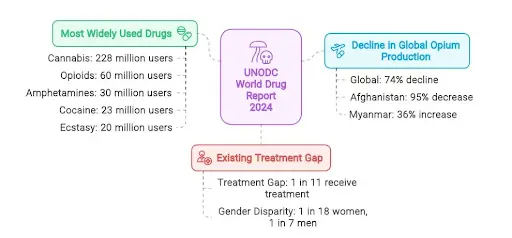
About UNODC:
- Global Role:
- Leader in the fight against illicit drugs and international crime, responsible for implementing the UN’s lead programme on terrorism.
- Headquarters:
- Vienna, Austria.
- Establishment:
- Formed in 1997 through the merger of the United Nations Drug Control Programme and the Centre for International Crime Prevention.
- Functions:
- Educates people about the dangers of drug abuse.
- Strengthens international action against illicit drug production and trafficking.
- Improves crime prevention and assists with criminal justice reform.
- Supports States in ratifying and implementing legal instruments against terrorism.
- Funding:
- Relies mainly on voluntary contributions from governments.
- India and UNODC:
- India works closely with UNODC on multiple fronts, including drug control, crime prevention, and anti-terrorism measures.
Cannabis Use:
- According to the WHO, cannabis is a generic term for the various psychoactive preparations of the plant Cannabis sativa. The derived products of cannabis include:
- THC: The major psychoactive constituent in cannabis is Delta-9 tetrahydrocannabinol (THC).
- Marijuana (Ganja): Frequently used to refer to cannabis leaves or other crude plant material.
- Hashish: Refers to unpollinated female cannabis plants.
- Cannabis Oil (Hashish Oil): A concentrate of cannabinoids obtained by solvent extraction of the crude plant material or resin.
International Laws Regulating Cannabis:
- Commission on Narcotic Drugs (CND):
- Founded in 1946, the CND is the UN agency mandated to control substances under global drug control conventions.
- 1961 Single Convention on Narcotic Drugs:
- Cannabis has been on Schedule IV, the most dangerous category, since the convention’s inception.
- Despite this, many jurisdictions have legalised cannabis for medicinal and recreational use.
- Over 50 countries now allow medicinal cannabis programs, and recreational use has been legalised in Canada, Uruguay, and 15 US states.
Indian Context: Narcotic Drugs and Psychotropic Substances Act (NDPS), 1985:
- Illegalization:
- The Act illegalizes any mixture of charas and ganja, or any drink prepared from them.
- Legal Exceptions:
- The law does not ban the use of seeds and leaves of the cannabis plant if these are not mixed with other parts of the plant.
- For example, bhang, commonly consumed during the Holi festival, and chutney made from cannabis seeds are not illegal.
|
UPSC Civil Services Examination, Previous Year Question (PYQ) Prelims Q:1 Consider the following statements: (2019)
Which of the statements given above are correct?
Answer: C Q:1 India’s proximity to the two of the world’s biggest illicit opium-growing states has enhanced her internal security concerns. Explain the linkages between drug trafficking and other illicit activities such as gunrunning, money laundering and human trafficking. What counter-measures should be taken to prevent the same? (2018) |
Source: UN
Himalayan Serow
Why in the News?
- Recently, a mainland serow, also known as the Himalayan Serow (Capricornis sumatraensis thar), was sighted at an unusually low elevation of 96 metres above mean sea level in Raimona National Park, Assam.
- This is the lowest recorded elevation for this species outside its natural habitat in Bhutan, indicating a significant range extension.

About Himalayan Serow:
Details:
- Herbivore species.
- Also known as Thar.
- Resembles a cross between a goat, a donkey, a cow, and a pig.
Recognition:
- Official state animal of Mizoram.
Distribution:
- Found at altitudes between 2,000 metres and 4,000 metres (6,500 to 13,000 feet).
- Found across the India-Bhutan border in Phibsoo Wildlife Sanctuary and Royal Manas National Park.
- Present in eastern, central, and western Himalayas, but not in the Trans-Himalayan region.
Conservation Status:
- IUCN Red List: Vulnerable
- CITES: Appendix I
- Wildlife Protection Act, 1972: Schedule I
Raimona National Park:
- Location: Located in the Bodoland Territorial Region (BTR) of Assam.
- Establishment: Declared a national park in June 2021, making it the sixth national park in Assam.
- Geography: Shares its northern boundary with Bhutan, forming part of the transboundary conservation landscape.
- Ecology: Characterised by dense forests, rivers, and grasslands, part of the greater Manas Biosphere Reserve and an extension of the Manas National Park.
- Flora: Diverse vegetation including semi-evergreen forests, mixed deciduous forests, and grasslands.
- Fauna: Rich wildlife habitat hosting species like Asian elephants, tigers, clouded leopards, golden langurs, Indian gaur, various deer species, hornbills, great pied hornbills, migratory birds, reptiles, and amphibians.
Source: TH
Pasi Community
Why in the news?
- A newly-elected MP from Faizabad took his oath in the Lok Sabha, invoking the names of Veerangana Uda Devi and Maharaja Bijli Pasi during the ceremony.
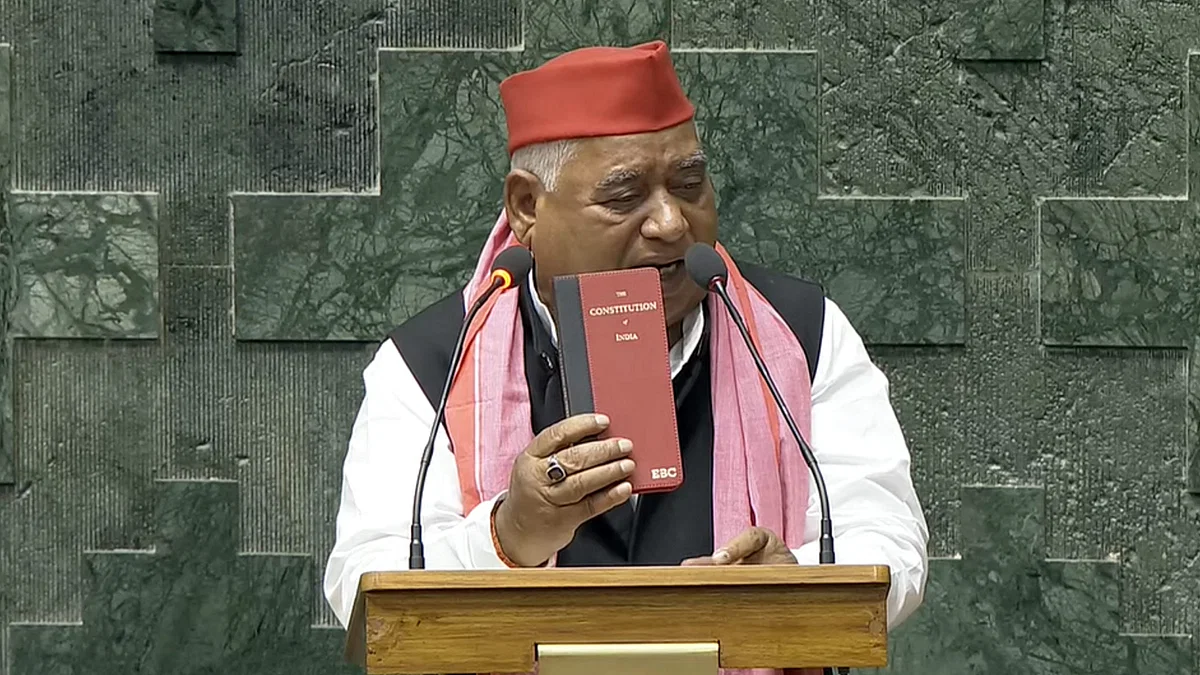
Parliamentary Oath:
- About:
- The parliamentary oath is prescribed in the third schedule of the Constitution.
- MPs swear or affirm to bear true faith and allegiance to the Constitution of India, uphold India's sovereignty and integrity, and faithfully discharge their duties.
- Evolution of Oath over the Years:
- Initially drafted without invoking God, amendments were made during the Constituent Assembly discussions to include God, accommodating both believers and non-believers.
- The Constitution (Sixteenth Amendment) Act, 1963, added the commitment to uphold India's sovereignty and integrity.
- Process:
- MPs must submit their election certificate before taking the oath.
- They can take the oath in English or any of the 22 languages recognized by the Constitution, using the name on their election certificate without alterations.
- 87% of MPs in the last Lok Sabha swore in the name of God, with 13% affirming allegiance to the Constitution.
- Invoking Different Icons during Oath-Taking Ceremony in Parliament:
- Elected members often mention historical figures, leaders, or cultural icons significant to them or their communities during oath-taking.
- This reflects India's cultural diversity and historical richness, as well as personal or political affiliations of the MPs.
Invoking Icons during Oath-Taking:
- Uda Devi:
- Born in Ujirao, Lucknow, Uda Devi was part of Begum Hazrat Mahal's royal guard during the 1857 Mutiny.
- Known for her bravery and leadership, she mobilised people against the British and fought near the Gomti River in Lucknow, becoming a martyr on November 16, 1857.
- She is commemorated annually on November 16 in central Uttar Pradesh and remains an important figure, especially revered by the Dalit community.
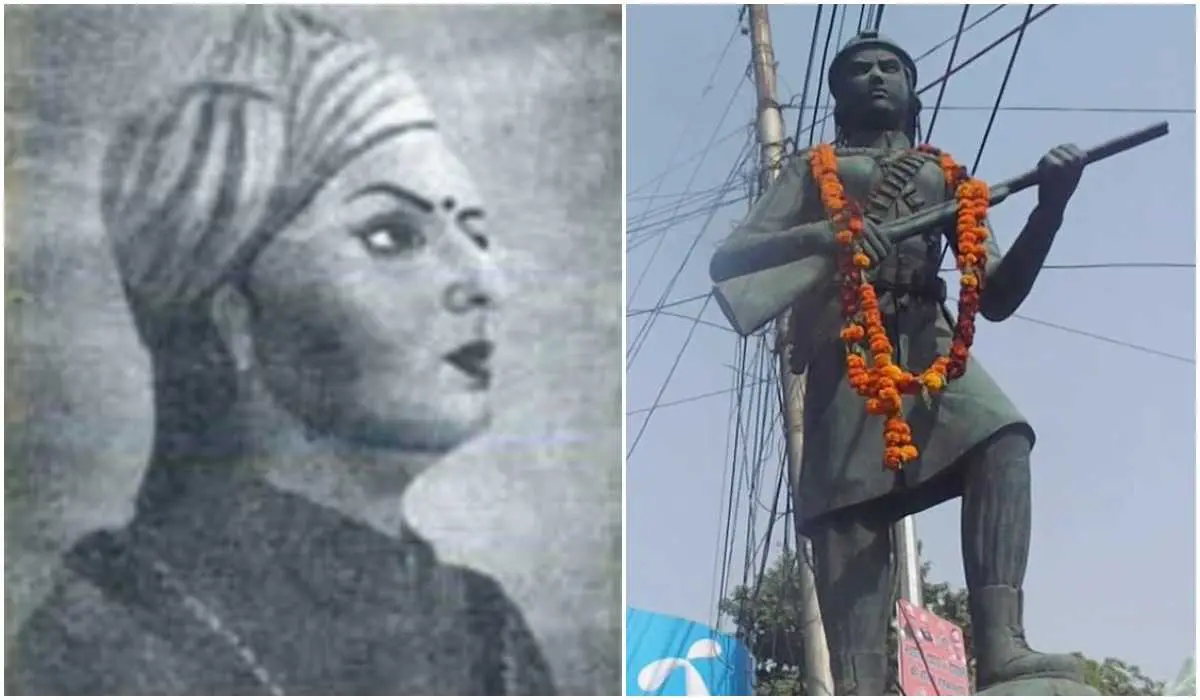
- Maharaja Bijli Pasi:
- A prominent leader among the Pasi community in central Uttar Pradesh.
- Ruled parts of UP during the medieval period, with his fort ruins and statue standing in Lucknow.
- Other notable Pasi figures include Daldev, Baldev, and Kakoran from regions like Lucknow, Rae Bareli, and Barabanki.
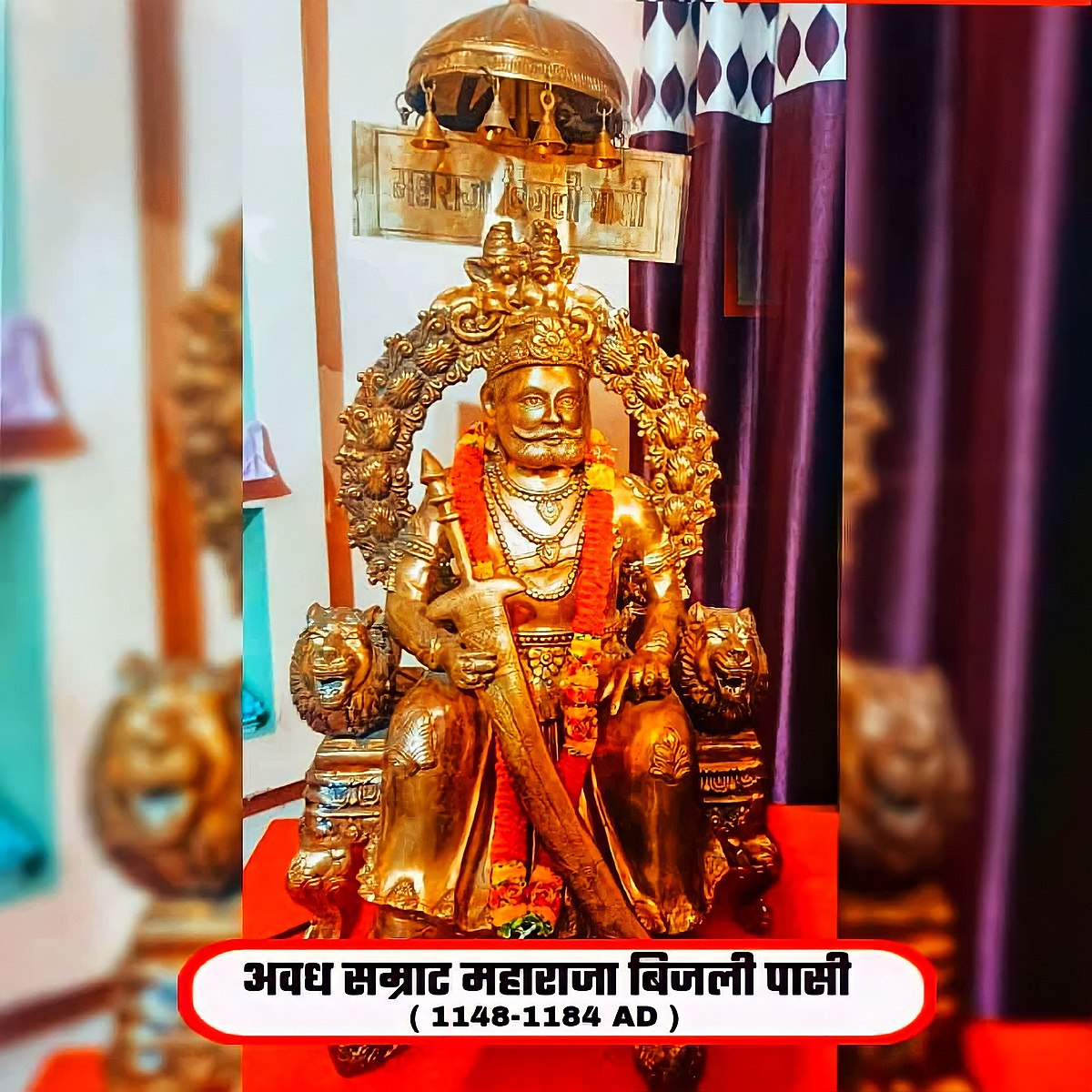
Source: IE
Indian Painted Frog (Uperodon taprobanicus)
Why in the news?
- Recently, a rare Indian Painted Frog was sighted at Kawal Tiger Reserve in Telangana, marking its return after last being seen in 2016 in the same state.
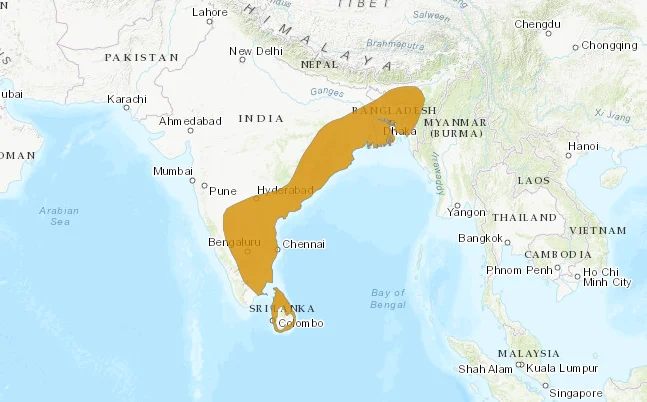
About the Indian Painted Frog:
- Known alternatively as the Sri Lankan painted frog or painted globular frog, it is a distinctive amphibian belonging to the Microhylidae family.
- Range: Found in Nepal, Bangladesh, southern and eastern India, and Sri Lanka, typically up to an altitude of about 1300 metres.
- Physical Characteristics: Noted for its smooth, rounded body and unique coloration, often featuring various shades of brown alongside patches of vivid colours like orange or yellow.
- Preferred Habitats: Inhabits diverse environments including dry forests, coconut and rubber plantations, wetlands, rice fields, and disturbed areas close to human settlements.
- Behavioural Patterns: Typically spends daylight hours concealed in leaf litter, loose soil, or under fallen logs, occasionally ascending tree branches. It is primarily nocturnal, which makes daytime observations uncommon.
- Conservation Status: Classified by the IUCN as Least Concern

Source: (TOI)
50th Year of the Imposition of Emergency in India
Why in the news ?
- India marked the fiftieth anniversary of the imposition of Emergency, declared by then-PM Indira Gandhi on June 25, 1975.
- Which lasted for 21 months, leaving a profound impact on Indian politics with its suspension of civil liberties, curtailment of press freedom, mass arrests, cancellation of elections, and rule by decree.
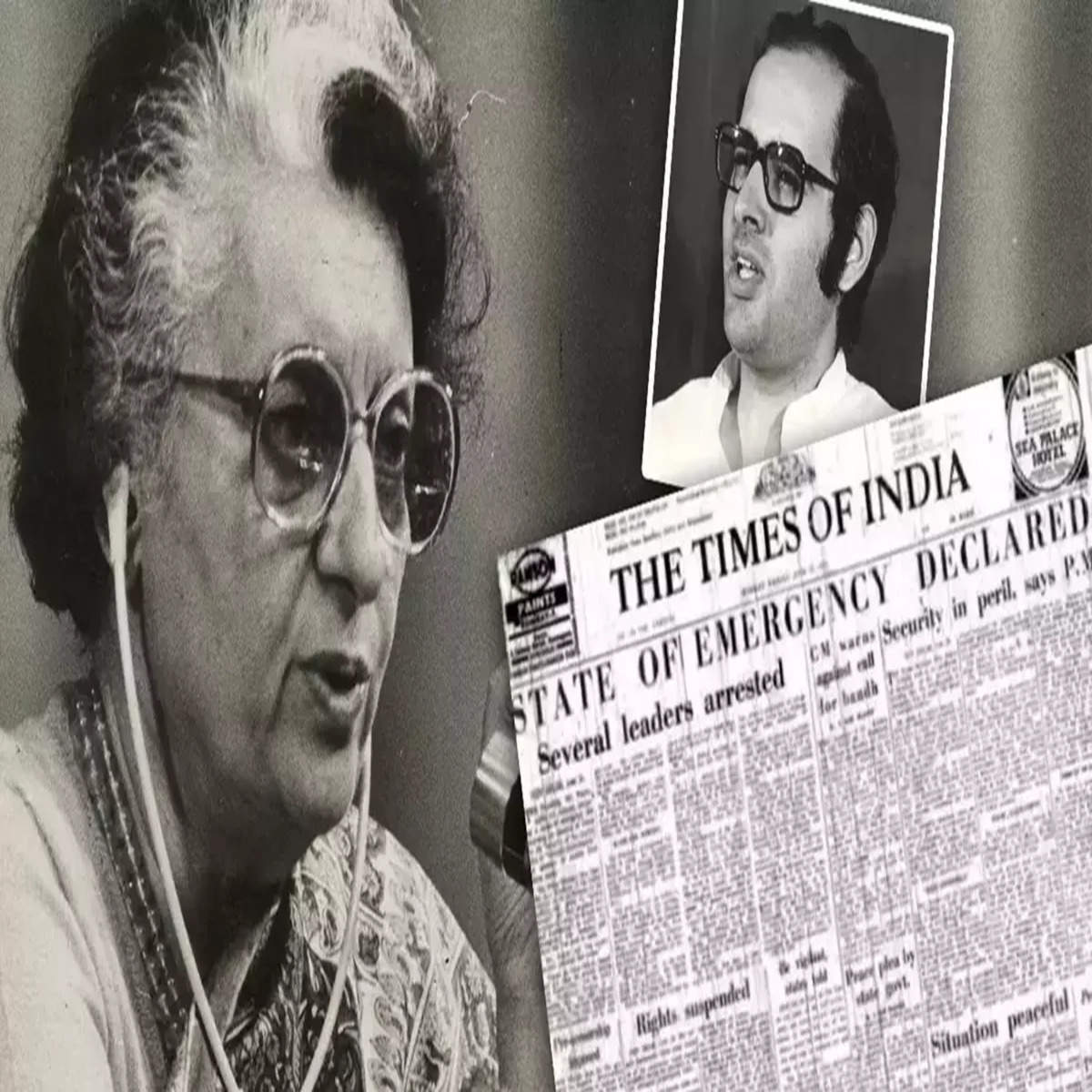
What is an emergency ?
- An emergency refers to legal provisions within a country's constitution or laws that empower the government to swiftly and effectively address extraordinary situations jeopardising national stability, security, sovereignty, or democracy.
- In India, these provisions are enshrined in Articles 352 to 360 under Part XVIII of the Constitution.
- These constitutional measures draw inspiration from Germany's Weimar Constitution, enabling the government to respond to crises such as war, rebellion, or other threats to the nation's well-being.
About the National Emergency (Article 352):
- Under Article 352 of the Indian Constitution, the President can declare a National Emergency if satisfied that the security of the country or any part thereof is threatened by war, external aggression (External Emergency), or armed rebellion (Internal Emergency).
- The term ‘armed rebellion’ replaced ‘internal disturbance’ through the 44th amendment.
- Powers Granted:
- The declaration allows the government to suspend fundamental rights (except Articles 20 and 21) to address the crisis effectively.
- Duration and Parliamentary Approval:
- The proclamation of emergency must be approved by both houses of Parliament within one month.
- If issued when the Lok Sabha is dissolved, it remains valid until 30 days from the first sitting of the Lok Sabha after reconstitution, provided the Rajya Sabha has approved it.
- The Emergency lasts initially for 6 months and can be extended indefinitely with Parliament's approval every six months, requiring a special majority.
- Revocation:
- The President can revoke the Emergency at any time by a subsequent proclamation without parliamentary approval.
- It must be revoked if the Lok Sabha passes a resolution disapproving its continuation by a simple majority.
- Applicability:
- A National Emergency can apply to the entire country or specific parts.
- The 42nd Constitutional Amendment Act (1976) allowed the President to limit its operation to certain regions.
- Judicial Review:
- The 38th Constitutional Amendment Act (1975) made the declaration immune to judicial review.
- The 44th Constitutional Amendment Act (1978) repealed this provision, restoring the judiciary's authority to review National Emergency declarations.
- Minerva Mills Case (1980): The Supreme Court ruled that a National Emergency proclamation can be challenged in court if based on malafide intent or irrelevant facts
|
Some of many Examples of Imposition of President Rule:
|
Political and Social Circumstances in India Leading up to the Emergency:
- January 1966: Indira Gandhi is elected Prime Minister.
- November 1969: The Congress party splits after Gandhi is expelled for violating party discipline.
- 1973-75: Surge in political unrest and demonstrations against the Indira Gandhi-led government.
- 1971: Political opponent Raj Narain lodges a complaint of electoral fraud against Indira Gandhi.
- June 12, 1975: Allahabad High Court finds Gandhi guilty of discrepancies in her electoral campaign.
- June 24, 1975: Supreme Court grants a conditional stay on the Allahabad HC verdict, declaring Gandhi's election to the Lok Sabha null and void. The SC also asks Gandhi to stay away from parliamentary proceedings.
- June 25, 1975: Declaration of Emergency by President Fakhruddin Ali Ahmed on the advice of Indira Gandhi. According to the government’s press note, certain persons were inciting the police and armed forces to not discharge their duties.
- June 26, 1975: Indira Gandhi addresses the nation on All India Radio.
End of Emergency and Afterwards:
- January 18, 1977: Indira Gandhi calls for fresh elections and releases all political prisoners.
- March 1977: The elections lead to a comprehensive defeat for Indira Gandhi, and Morarji Desai becomes India’s first non-Congress (Janata Party) Prime Minister.
- March 23, 1977: Emergency officially ends.
- The Shah Commission, constituted by the Janata government, finds the decision to impose Emergency to be unilateral and adversely affecting civil liberties.
What Happened During the Emergency?
- Suspension of civil liberties:
- Almost all opposition leaders (including JP) are detained, and about 36,000 people are imprisoned under the Maintenance of Internal Security Act (MISA).
- Newspapers are subjected to pre-censorship. In September 1976, Sanjay Gandhi initiated a mass forced sterilisation program in Delhi.
- Legal changes pushed through by Parliament:
- With the opposition in jail, Parliament passes the Constitution (38th Amendment) Act that bars judicial review of the Emergency.
- The Constitution (39th Amendment) Act says that the election of the Prime Minister cannot be challenged in the Supreme Court.
- The Constitution (42nd Amendment) Act makes changes to a range of laws, including taking away the judiciary’s right to hear election petitions, widening the authority of the Union to encroach on State subjects, and making any law passed by Parliament to implement any or all directive principles of state policy immune to judicial review.
- Changes pushed through by the Courts:
- In the famous case of ADM Jabalpur vs Shivkant Shukla (1976), the SC rules that detention without trial is legal during an emergency.
What were the Impacts of Imposing National Emergency in 1975?
- Constitutional Changes:
- Constitution (39th Amendment) Act, 1975:
- Enacted in response to the Allahabad High Court's ruling declaring Prime Minister Indira Gandhi's election void.
- Placed disputes involving the President, Vice President, Prime Minister, and Speaker beyond the judiciary's scope.
- Added certain Central Acts to the Ninth Schedule.
- Constitution (42nd Amendment) Act, 1976:
- Significantly increased the central government's authority and the Prime Minister's office by:
- Allowing deployment of forces in states and overriding state laws during emergencies.
- Limiting judicial review of laws and amendments, reducing their accountability.
- Extending the terms of Parliament and state assemblies.
- Allowing laws to override fundamental rights in cases of activities deemed anti-national.
- Constitution (44th Amendment) Act, 1978:
- Aimed to rectify the imbalances created by the 42nd Amendment.
- Restored the primacy of fundamental rights by:
- Limiting the suspension of rights: Article 21, protecting the right to life and liberty, could not be suspended during any emergency.
- Reinforcing judicial review: Strengthening the Supreme Court's power to review presidential proclamations of emergency.
- Requiring the President to act on the written recommendation of the cabinet before declaring a national emergency under Article 352.
- Constitution (39th Amendment) Act, 1975:
- Emergency Acted as a Vaccine Against Dictatorship:
- The period of emergency from 1975 to 1977 underscored the importance of democracy and highlighted the dangers of unchecked executive authority.
- This recognition has spurred efforts to strengthen democratic systems by imposing constraints on the Prime Minister's powers during crises.
- Emergency Undermined Democratic Integrity:
- The emergency period saw severe curtailment of civil liberties under acts like the Maintenance of Internal Security Act (MISA) and Defence of India Rules (DIR).
- This exposed vulnerabilities in democratic institutions and fostered scepticism about leadership.
- Vocalism About Rights:
- Strict media control during the emergency stifled dissent, leading to the emergence of grassroots movements and underground press advocating for human rights.
- Examples include the Navnirman Andolan in Gujarat, the Jayaprakash Narayan Movement in Bihar, and the George Fernandes-led Railway Strike.
- Evolving Role of Judicial Activism:
- The emergency period highlighted shifts in judicial activism, with the ADM Jabalpur case initially upholding the suspension of fundamental rights, sparking criticism.
- Subsequent rulings, like those in habeas corpus petitions and the Maneka Gandhi case, reaffirmed a commitment to protect fundamental rights and bolstered judicial review in India.
- Changes in Political Parties' Attitude:
- The emergency united opposition parties that had been previously divided, emphasising the importance of a robust opposition in a democracy.
- It also made political parties cautious about resorting to similar measures in the future, valuing democratic processes and constitutional norms.
How did the Emergency Change Indian Politics?
- Dented the Congress’ reputation: A party that led the struggle for civil liberties against the colonial state.
- First non-Congress government: The Janata experiment gives India its first non-Congress government, but its collapse also demonstrates the limits of anti-Congressism.
- Emergence of young leaders: The Emergency gives India a crop of young leaders (Lalu Prasad Yadav, George Fernandes, Arun Jaitley, Ram Vilas Paswan, etc.) who dominate politics for decades to come.
- Coming together of the social forces: This results in an increase in the representation of OBCs in Parliament. As a result, the Janata government appoints the Mandal Commission to look into OBC quotas, which goes on to make the rise of the OBCs in North India irreversible.
- Emergency as a part of political vocabulary: Every perceived act of high-handedness by a government is attributed to an “Emergency mindset.”
|
UPSC Civil Services Examination, Previous Year Question (PYQ) Prelims Q:1 Which of the following is/are the exclusive power(s) of Lok Sabha?(2022)
Select the correct answer using the code given below:
Ans: (b) Q:2 With reference to the constitution of India, prohibition or limitations or provisions contained in ordinary laws cannot act as prohibitions or limitations on the constitutional powers under Article 142. It could mean which one of the following?(2019)
Ans: (b) Q:3 If the President of India exercises his power as provided under Article 356 of the Constitution in respect of a particular State, then(2018)
Ans: (b) Mains Q:1 Under what circumstances can the Financial Emergency be proclaimed by the President of India? What consequences follow when such a declaration remains in force? (2018) |
Source: IE
Practice Questions - Current Affairs 29-06-2024
Q1. Consider following statements about agriculture export in India:
- Agricultural exports in FY24 declined from that in FY23.
- Since 1991 economic reforms, every year India has witnessed surplus in external trade of agricultural products.
Which of the statements given above is/are correct?
(a) 1 only
(b) 2 only
(c) Both 1 and 2
(d) Neither 1 nor 2
Q2. Consider the following statements about the importance of agricultural exports for a country:
- Increased agricultural exports always lead to a decrease in domestic food prices.
- Agricultural exports can enhance a country's foreign exchange reserves.
- A focus solely on agricultural exports can lead to neglect of food security needs in the exporting country.
Which of the options given below is/are correct?
(a) 1 and 2 only
(b) 2 and 3 only
(c) 1 only
(d) 1, 2 and 3
Q3. Consider the following statements about factors affecting agricultural exports in a country:
- A rise in global agricultural prices can influence a country's agricultural exports.
- A well-designed export policy that simplifies procedures and reduces trade barriers can significantly boost agricultural exports.
Which of the options given below is/are correct?
(a) 1 only
(b) 2 only
(c) Both 1 and 2
(d) Neither 1 nor 2
Q4. Consider the following statements about the impact of an export ban on farmers and consumers in a country:
- It will increase food inflation for consumers in the short term.
- It can lead to loss of opportunity for farmers to earn extra income.
Which of the options given below is/are correct?
(a) 1 only
(b) 2 only
(c) Both 1 and 2
(d) Neither 1 nor 2
Q5. Consider the following statements about India's agricultural trade:
- Rice is the largest agricultural product exported from India.
- Pulses are the largest imported agricultural product in India..
Which of the options given below is/are correct?
(a) 1 only
(b) 2 only
(c) Both 1 and 2
(d) Neither 1 nor 2
Q6. The target of India's Agriculture Export Policy 2018 was to:
(a) To prioritise the interest of farmers over the interest of consumers.
(b) To reduce diversification of our export basket and focus on few products only in which India has potential to be a global leader.
(c) To double agricultural exports to US$ 30+ Billion by 2025.
(d) To double agricultural exports to US$ 60+ Billion by 2022.
Q7. In the context of international trade, dumping refers to a situation where a country exports a good at a price that is:
(a) Company exporting goods at a price that is much higher than the price it charges in its domestic market.
(b) Higher than the cost of production in the exporting country.
(c) Lower than the price at which the goods are sold in any other third country.
(d) Company exporting a good at a price that is artificially lower than the price it charges in its domestic market.
Q8. Which ministry is responsible for recommending anti-dumping duty in India?
(a) Ministry of Finance
(b) Ministry of Agriculture
(c) Ministry of Commerce and Industry
(d) Ministry of External Affairs
Q9. Consider the following statements about anti-dumping duty:
- An anti-dumping duty is a direct tax.
- The World Trade Organization (WTO) permits member countries to impose anti-dumping duties under certain conditions.
Which of the options given below is/are correct?
(a) 1 only
(b) 2 only
(c) Both 1 and 2
(d) Neither 1 nor 2
Q10. Who of the following appoints the President of GST Appellate Tribunal?
(a) Central Government on recommendation of the GST Council.
(b) Central Government in consultation with the Chief Justice of the Supreme Court.
(c) Collegium of the Supreme Court.
(d) Ministry of Finance in consultation with GST Council
Q11. Who of the following is qualified to be appointed as President of the GST Appellate Tribunal?
- Retired judge of Supreme Court of India
- Retired judge of high court of a state with at least 5 years of service
- A person with distinguished career in field related to taxation
Select the correct answer using the code given below:
(a) 1 and 2 only
(b) 2 and 3 only
(c) 1 and 3 only
(d) 1, 2 and 3
Q12. GST Appellate Tribunal is a:
(a) Constitutional Body
(b) Statutory Body
(c) Executive body
(d) Ad hoc body established by the Supreme Court
Q13. Provision for Tribunals has been introduced in Indian Constitution via:
(a) 35th Amendment Act, 1974
(b) 42nd Amendment Act of 1976
(c) 73rd Amendment Act, 1992
(d) 61st Amendment Act, 1988
Q14 Which of the following statements best describe “Front Running”?
(a) Front running is the practice of purchasing a security based on advance non-public information regarding an expected large transaction.
(b) Front-running is a common strategy employed by day traders to capitalize on short-term market fluctuations.
(c) Front-running is a legitimate investment tactic where brokers prioritize their clients' orders by charging a premium fee for faster execution.
(d) Front-running is simply the act of a broker recommending a stock to a client.
Q15. Which of the following statements best explain the difference between Front Running and Insider Trading?
(a) Front runner uses publicly available information while insider trading involves use of non-public information.
(b) While front running is legal in India, insider trading is illegal.
(c) Front runner uses non-public information about upcoming trades while “Insider Trading” involves trading a security based on material, non-public information about the company itself.
(d) None of the above
Q16. Cost Inflation Index (CII) in India is released by:
(a) Central Board of Direct Taxes (CBDT)
(b) Securities and Exchange Board of India (SEBI)
(c) Reserve Bank of India (RBI)
(d) National Stock Exchange of India (NSE)
Q17. Consider the following statements with reference to Cost Inflation Index (CII) in India:
- It is used to track the price of consumer goods.
- CII in India has a base year of 2001.
Which of the statements given above is/are correct?
(a) 1 only
(b) 2 only
(c) Both 1 and 2
(d) Neither 1 nor 2
Q18. Periodic Labour Force Survey (PLFS) is published by:
(a) Ministry of labour & employment
(b) Ministry of commerce and industry
(c) Ministry of social justice and empowerment
(d) Ministry of Statistics and Programme Implementation
Q19. If employment grows at growth rate of GDP:
(a) Employment elasticity of growth is positive
(b) Employment elasticity of growth is negative
(c) Employment elasticity of growth is undefined
(d) None of the above
Q20. Lorenz curve is related to which of the following parameters?
(a) Employment
(b) GDP growth rate
(c) Inequality
(d) Exchange rate fluctuation
Share the article
Edukemy’s Current Affairs Quiz is published with multiple choice questions for UPSC exams
MCQ
Get Latest Updates on Offers, Event dates, and free Mentorship sessions.

Get in touch with our Expert Academic Counsellors 👋
FAQs
UPSC Daily Current Affairs focuses on learning current events on a daily basis. An aspirant needs to study regular and updated information about current events, news, and relevant topics that are important for UPSC aspirants. It covers national and international affairs, government policies, socio-economic issues, science and technology advancements, and more.
UPSC Daily Current Affairs provides aspirants with a concise and comprehensive overview of the latest happenings and developments across various fields. It helps aspirants stay updated with current affairs and provides them with valuable insights and analysis, which are essential for answering questions in the UPSC examinations. It enhances their knowledge, analytical skills, and ability to connect current affairs with the UPSC syllabus.
UPSC Daily Current Affairs covers a wide range of topics, including politics, economics, science and technology, environment, social issues, governance, international relations, and more. It offers news summaries, in-depth analyses, editorials, opinion pieces, and relevant study materials. It also provides practice questions and quizzes to help aspirants test their understanding of current affairs.
Edukemy's UPSC Daily Current Affairs can be accessed through:
- UPSC Daily Current Affairs can be accessed through Current Affairs tab at the top of the Main Page of Edukemy.
- Edukemy Mobile app: The Daily Current Affairs can also be access through Edukemy Mobile App.
- Social media: Follow Edukemy’s official social media accounts or pages that provide UPSC Daily Current Affairs updates, including Facebook, Twitter, or Telegram channels.

